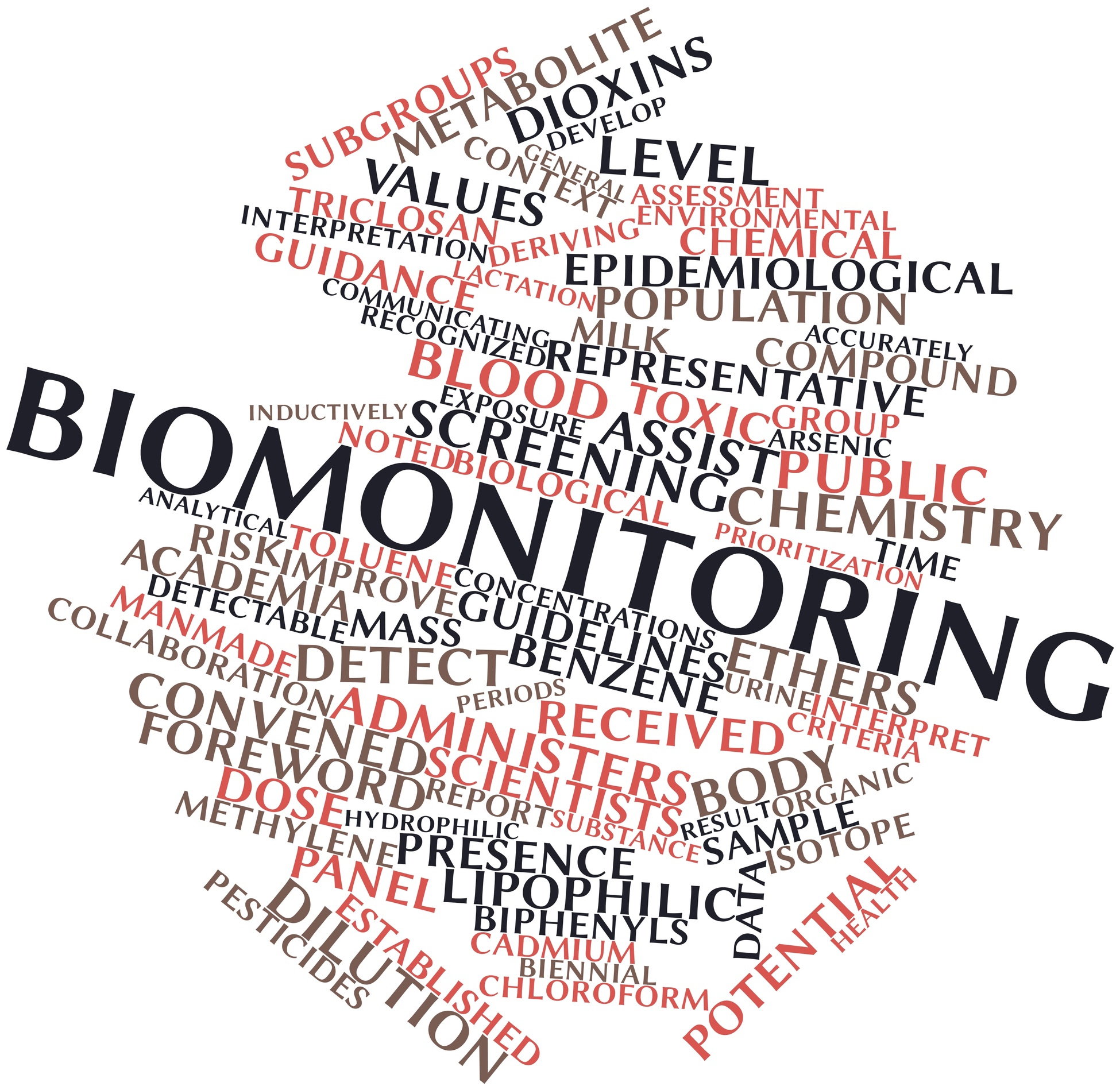Human biomonitoring (HBM) is a tool of health-related environmental monitoring. In human biomonitoring, human body fluids and tissues are examined for contamination with pollutants. Thus, for example, the levels of mercury in the blood or urine individuals or populations is analysed.
Human biomonitoring plays an essential role in environmental health and the assessment of pollution levels in the population, population groups or individuals.
Human biomonitoring makes it possible to determine levels of contamination in individuals and, where applicable, some of the biological effects triggered by it. It is thus subdivided into human biological monitoring of exposure and biological effect monitoring. Human biological monitoring of exposure refers to the one-off or repeated measurement of the concentration of substances or their metabolites in human materials (blood, breast milk, urine, hair, teeth, breath, organ samples, etc.). Biological effect monitoring is what professionals call the one-off or repeated measurement of biological markers of exposure to chemical, physical or biological factors or show their effects (effect markers). As effect parameters can often not be associated with a particular substance, they can as a rule be assessed only in connection with the corresponding pollution burden.
In all human biomonitoring techniques, the specimens are examined away from the test person. This distinguishes them from other environmental medically relevant procedures, such as methods of assessing lung function.
The advantage of human biomonitoring consists in recording the actual internal contamination of an organism which can come from different sources and be absorbed in different ways (via the respiratory tract or the mouth or through the skin). The particular characteristics of a person with respect to absorption, metabolism and excretion thus feed directly into the findings. By way of contrast, environmental monitoring data are frequently unable to deliver exact results on the exposure of a single individual or the internal contamination of population groups, because pollutants from water are absorbed differently from those found in soil or air and living habits are different. With regard to the assessment of the exposure to pollutants of individuals and the contamination of population groups, human biomonitoring thus often offers a much more realistic analysis than the quantitative detection of external contamination.
Human biomonitoring, environmental monitoring, and food monitoring should be seen as complementary rather than mutually exclusive investigative approaches.


